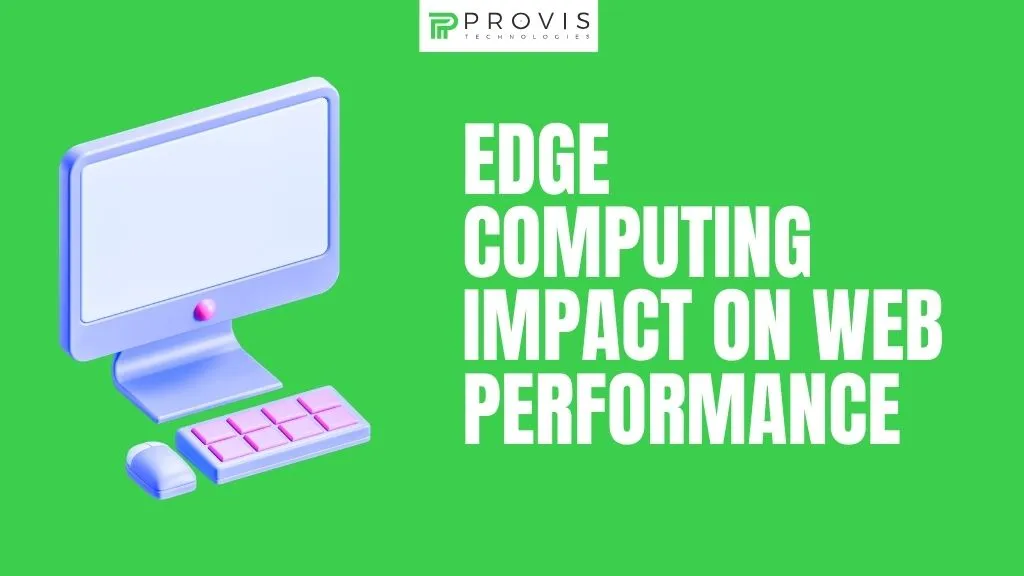Today, fast load times and smooth user experiences have become a norm and are non-negotiable. For this reason, traditional cloud computing is facing challenges in keeping up with the demand. As more people worldwide use the internet, ensuring everybody gets quick access to data and services is a challenging task. This is where edge computing comes into play. By bringing data processing closer to the users, edge computing transforms how web performance is managed. In simple words, to meet today’s growing technological demands, edge computing serves as the best solution. Because it makes things faster – what it does is it provides you with the desired information from the nearest possible source. It is designed to give you services from the source nearest to the user. Let’s dive deep into edge computing and its stuff via this article – Edge Computing and Its Impact on Web Performance.
Some Surprising Edge Computing Stats
- You know what, Fortune Business Insights says that the global edge computing market is projected to grow from $40.49 billion in 2022 to $116.50 billion by 2030, at a staggering CAGR of 14.6%.
- Cisco thinks that edge computing is expected to reduce network latency by up to 90% – significantly improving real-time data processing.
- IDC predicted that by 2024, the number of IoT devices deployed at the edge is expected to reach over 90 billion, up from 30 billion in 2020.
What is Edge Computing?
Edge computing is a type of distributed computing where data is processed closer to where it’s being generated or used, rather than relying on centralized data centers located far away. The “edge” refers to the outermost part of the network, closest to the end users. For example, instead of sending all data back to a central cloud server to be processed, edge computing allows some tasks to be handled by local devices like routers, gateways, or edge servers that are closer to the user.
The core idea of edge computing is to reduce the distance data must travel. By processing data at the network edge, the time taken to complete tasks is minimized, which leads to faster and more efficient services. This affects applications that require real-time or near-instantaneous responses the most, such as video streaming, gaming, and e-commerce websites.
What about the Traditional Cloud Computing Model?
It’s essential to first look at traditional cloud computing to understand the significance of edge computing. Cloud computing operates by storing and processing data in centralized servers that could be located hundreds or even thousands of miles away from users. While this model has allowed businesses to scale their operations and manage vast amounts of data, it comes with certain limitations, particularly latency.
Latency is the delay between a user requesting data and the server delivering it. Even a few extra milliseconds of delay can significantly affect user experience, especially for websites and apps that require real-time interaction. For instance, in online gaming, a delay in data transfer can mean the difference between winning & losing. In e-commerce, slow page load times can result in higher bounce rates and lost sales. See, edge computing is the need of the hour – no?
How Edge Computing Works?
Edge computing solves the latency problem by bringing the computing resources closer to the user. Instead of processing every request in a distant cloud server, edge devices handle many of the tasks locally. Let’s understand this the easier way when a user accesses a website, their request might be processed by a nearby edge server rather than being sent to a central server located far away. This drastically reduces the time it takes for the user to receive a response. Or, take it this way, if you are down the road and need ice cream, it takes less time if you get ice cream from down the road than otherwise.
Edge computing is made possible through a network of distributed edge devices and servers that act as mini data centers. These devices can process data, store content, and run applications – all without relying on a central cloud server. As a result, data that doesn’t need to travel long distances is processed faster, hence it improves overall performance.
The Impact of Edge Computing on Web Performance
Now that we understand the basics of edge computing, let’s dive into how it directly impacts web performance.
Reduced Latency
As you now know, with edge computing, data doesn’t need to travel as far to be processed, meaning users experience significantly lower latency. In industries like e-commerce, where every second counts, this reduction in latency can lead to higher user satisfaction, more conversions, and improved customer retention. Studies show that even a one-second delay in page load time can result in a 7% decrease in conversions. Edge computing helps minimize these delays by offering faster load times & smoother interactions. You get an idea about its importance when you hear such differences – right?
Better Content Delivery
Websites with large amounts of content get extra benefits from edge computing. Instead of sending the large files from a central server, content is cached at the edge of the network, closer to the user. This is often referred to as a content delivery network (CDN). With edge computing, CDNs distribute cached versions of web content across various edge locations. When a user requests content, the edge server delivers it from the nearest location. This results in faster load times. This approach works great for media-heavy websites, video streaming platforms, and online services that require large files to be downloaded or streamed.
Scalability & Reliability
As your business becomes popular, you must be ready to handle more traffic. Edge computing offers a scalable solution by distributing the load across multiple edge servers rather than relying on a single central server. This means that if one edge server experiences high traffic, other edge servers can share the load to prevent bottlenecks and ensure a seamless user experience. Moreover, edge computing enhances the web service reliability. If one edge server goes down, requests can be routed to another nearby server – hence, no downtime. This redundancy is crucial for you when you must keep your services always available.
Tight Security
Edge computing helps improve security in many ways and can help mitigate attacks like DDoS by distributing traffic across multiple servers and preventing any one server from being overloaded. It can also apply security protocols locally to make certain that malicious traffic is detected and filtered before it reaches the central cloud. This decentralized approach to security reduces the risk of large-scale attacks and protects sensitive user data. Makes sense!
Better User Experience
Edge computing enhances user experience by making sure that your online platform loads quickly and is always available. Meaning, it helps deliver a consistent and high-quality experience regardless of location or device. Also, sometimes, there’s a problem within your platform that needs to be fixed to get peak performance. For that, you can connect with Provis Technologies for web-app support services. Provis Technologies is a renowned name in the IT agency.
Bottom Line
No doubt, edge computing is revolutionizing web performance by addressing the limitations of traditional cloud computing. It is transforming the way websites & applications function. As we will continue to adopt edge computing technologies, our users will benefit from it. Edge computing is indeed a perfect solution to the challenges of web performance. Also, if you need web-app support services, which could be another factor if your platform is experiencing issues – connect with Provis Technologies.
FAQs
Why edge computing?
We need edge computing for better & faster user experience of online services.
Why is my system slow?
There might be technical issues – connect with Provis Technologies for web-app support services.
Write 3 benefits of edge computing.
Faster load times, improved reliability, and better user experiences.
Written By
Author's Picks
- Advantages And Disadvantages of Implementing IoT in Business
- 26/07/2023
- How Mobile First E-commerce Design Can Boost Conversions in 2025
- 26/04/2025
- Step-by-Step Guide to B2B Web Application Development in 2025
- 26/02/2025
Categories
- AI for Startups
- AI in Web Development
- AI Integration
- AI Platforms
- AI Prompt
- AI Tools
- AI Trading Software
- Android App
- Android vs iOS Development
- Angular
- API
- API Development
- App
- app development
- App Idea
- App User Feedback
- Application
- Artificial Intelligence
- Audit Services
- Automotive Industry
- Awards and Recognition
- Business Consulting
- Business Website
- Chatbots
- CRM
- CRM for Financial Advisors
- Custom CRM
- Custom SaaS
- Custom Website
- Customer Service
- dashboard design
- Developing a Mobile App
- Digital Business
- E-commerce
- EMR Integration
- Finance
- Financial Advisors
- Financial Advisors
- GIT
- Health Insurance
- iOS App
- iOS App Development
- IoT Mobile App Development
- IoT Platforms
- IT Audit Services
- IT Consulting
- IT Strategies
- Java Development
- Laravel
- Lean Canvas
- Learning Management System
- Logistics Apps
- Mobile App Development
- MVP
- Native App
- News Aggregator Site
- OTT
- Outsourcing IT
- Payment Gateway
- predictive analysis
- Product Launch Strategy
- Progressive Web App (PWA)
- Prototype
- Recommender Systems
- Ruby
- SaaS
- SaaS Application
- SaaS Business
- SaaS Company
- SaaS Development
- SaaS Product
- SaaS Project
- Sales Funnel
- SEO
- Shopping Cart
- Software Development
- SSL and TLS
- Startup Checklist
- Technology
- Tetradic Color Scheme
- UI/UX Design Company
- Unit Testing
- User Flow
- User Testing
- Web Development
- Web Performance Optimization
- website Maintenance Services
- Website Migration Service
- Website Speed Optimization
- WooCommerce
- WordPress





